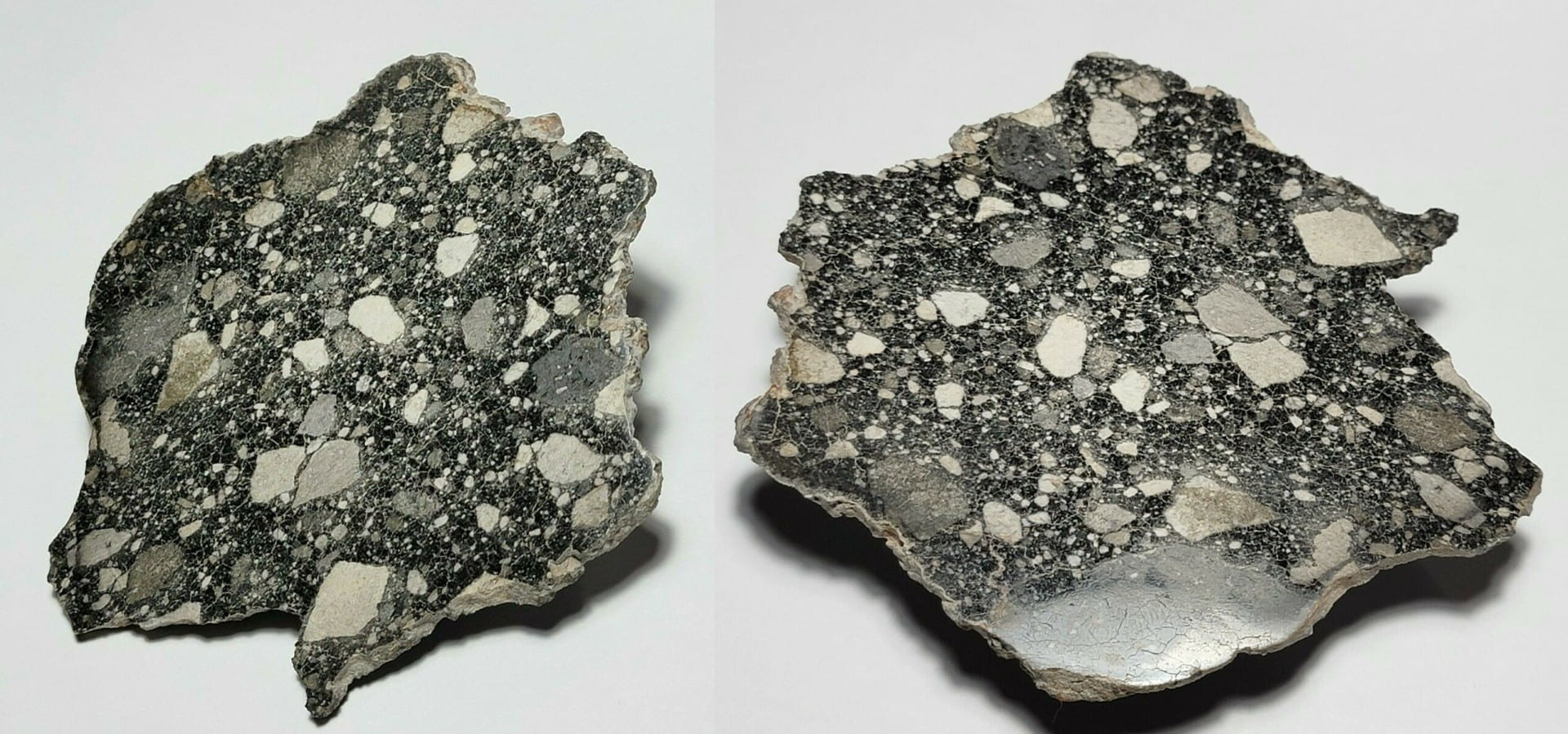Lunar Meteorite: Northwest Africa 14685 & 14686
assumed paired stones




| from The Meteoritical Bulletin, No. 111 Northwest Africa 14685 (NWA 14685)(Northwestern Africa) Lunar meteorite (fragmental breccia) History: Purchased January, 2020 by Mark Lyon from a northwest African dealer. Physical Characteristics: Three identical stones, cut surface reveals a fragmental breccia set in a dark-gray ground mass. Petrography: (A. Ross, UNM; D. Dickens, NMMS; C. Agee, UNM) This meteorite is a clast-rich polymict breccia with lithic fragments embedded in a fine-grained moderately vesiculated groundmass. Fragmental clasts sizes range from <0.1-6 mm and are primarily basaltic. Kamacite, Cr-spinel, silica, troilite, and ilmenite are present. This meteorite is shocked with some impact melt textures present. Geochemistry: (A. Ross, UNM) Olivine Fa49.0±17.5, Fe/Mn=93±5, n=6; pigeonite Fs25.5±4.7Wo8.6±1.8, Fe/Mn=51±4, n=3; high-Ca pyroxene Fs31.8±27.2Wo42.6±0.3, Fe/Mn=62±26 n=2; plagioclase An95.1±1.6Ab4.7±1.6Or0.2±0.1, n=4. Classification: Lunar Fragmental Breccia. Specimens: 20 g including a probe mount on deposit at UNM, Mark Lyon holds the main mass |
| from The Meteoritical Bulletin, No. 111 Northwest Africa 14686 (NWA 14686)(Northwestern Africa) Lunar meteorite (fragmental breccia) History: Purchased January, 2020 by Mark Lyon from a Northwest African dealer. Physical Characteristics: Eight identical looking stones of varying sizes without fusion crust. Cut surface of one of the stones reveals a fragmental breccia set in a dark-gray ground mass. Petrography: (A. Ross, UNM; D. Dickens, NMMS; C. Agee, UNM) This meteorite is a clast-rich polymict breccia with lithic fragments embedded in a fine-grained moderately vesiculated groundmass showing dispersed melt features. Quenched melt pockets were observed enclosing some olivine and pyroxenes grains. Fragmental clasts sizes range from <0.1-8 mm and appear to be primarily basaltic. Kamacite, Cr-spinels, silica, troilite, and ilmenite are present. A range of Cr and Ti oxides were detected. This meteorite is shocked with intermittent impact melt textures present. Geochemistry: (A. Ross, UNM) Olivine Fa64.4±8.6, Fe/Mn=89±9, n=6; pigeonite Fs40.0±10.0Wo8.0±0.1, Fe/Mn=57±3, n=2; high-Ca pyroxene Fs17.8±9.3Wo34.4±13.6, Fe/Mn=50±7 n=2; plagioclase An96.6±0.8Ab3.2±0.8Or0.2±0.1, n=4. Classification: Lunar Fragmental Breccia. Specimens: 22.1 g including a probe mount on deposit at UNM, Mark Lyon holds the main mass. |
| Randy Says… I have not studied Northwest Africa 14685 and 14686. I assume that they are paired from the similarity of the descriptions. |